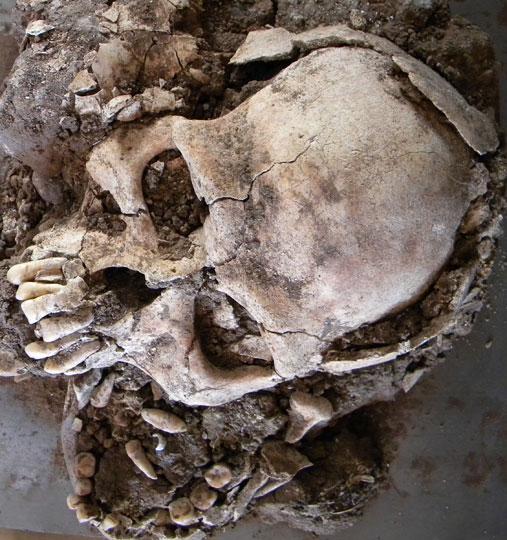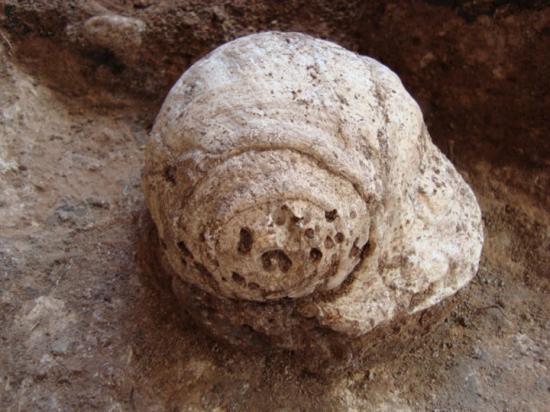Mexican archaeologists excavate 1,600 year-old shaft tomb in the State of Zacatecas
Source - http://artdaily.com/news/69920/Mexican-archaeologists-excavate-1-600-year-old-shaft-tomb-in-the-State-of-Zacatecas?#.U2pt_Pl_utI
Photos: Proyecto Arqueológico Cerro del Teúl. INAH
REGISTRAN TUMBA DE TIRO EN EL SUR DE ZACATECAS
Source - http://inah.gob.mx/boletines/17-arqueologia/7175-registran-tumba-de-tiro-inalterada-en-el-sur-de-zacatecas
Translated by: Cristina Perez Ayala

Under the layers of earth they found the osseous remains of 28 individuals
Although it has been known since the 1950’s that inhabitants in the southern part of Zacatecas participated in the tradition of shaft tombs, there hadn’t been a chance for the systematic excavation of these funerary contexts, until experts at the National Institute of Anthropology and History (INAH) attended the municipality of Valparaiso in order to make an archaeological salvage of one. Under the narrow ledge of the asphalted path that leads to La Florida, an archaeological team coordinated by investigator Laura Solar discovered in 2009 the contents of a chamber that –unlike other registries of shaft tombs in this place– had remained unaltered for at least 1,600 years. “Everything indicates that two centuries before our era and 400 after Christ’s, the societies that populated this area shared many cultural patterns with western societies, particularly those in Jalisco, but also those in Michoacan and Nayarit”, observed the specialist. Under the layers of earth they found the osseous remains of 28 individuals, according to the cranium count. The skeletons correspond mainly to adults, although they have identified what they believe are two adolescents and eight infants.

Cráneo de un individuo adulto

Restos de una persona sosteniendo arillos de átlatl.
Archaeologists were startled to find two protection handles elaborated with shells which corresponded to the belief that a series of battles would happen after death, which is why some of their dead were armed for this ritual. An interesting aspect about it was that most of the skeletons were displayed in an extended manner, expect for a character placed in fetal position. This evidently signals there were at least two moments of activity in the chamber. “We don’t know if the other individuals were placed simultaneously. There is a discussion to whether or not the shaft tombs contain the remains of sacrificed people; those who died in a simultaneous event; if they are consecutive burials of people related to each other or people with a similar sociopolitical status”.

Mano con pulsera
The abundance of materials in the tomb correspond to three snail shells, two of which were modified to act as trumpets, a shell bracelet, and millions of beads made of distinct materials (possibly in order to imitate the shell).

Caracol trompeta
Great part of these elements have been stabilized and restored. They have also recovered two projectile tips, a bodkin and a fragment of a needle elaborated with bone. Laura Solar added that all these elements mean to signal that the south of Zacatecas shared cultural traits with the western areas, leading her to conclude there was extensive exchange along the Pacific coast.